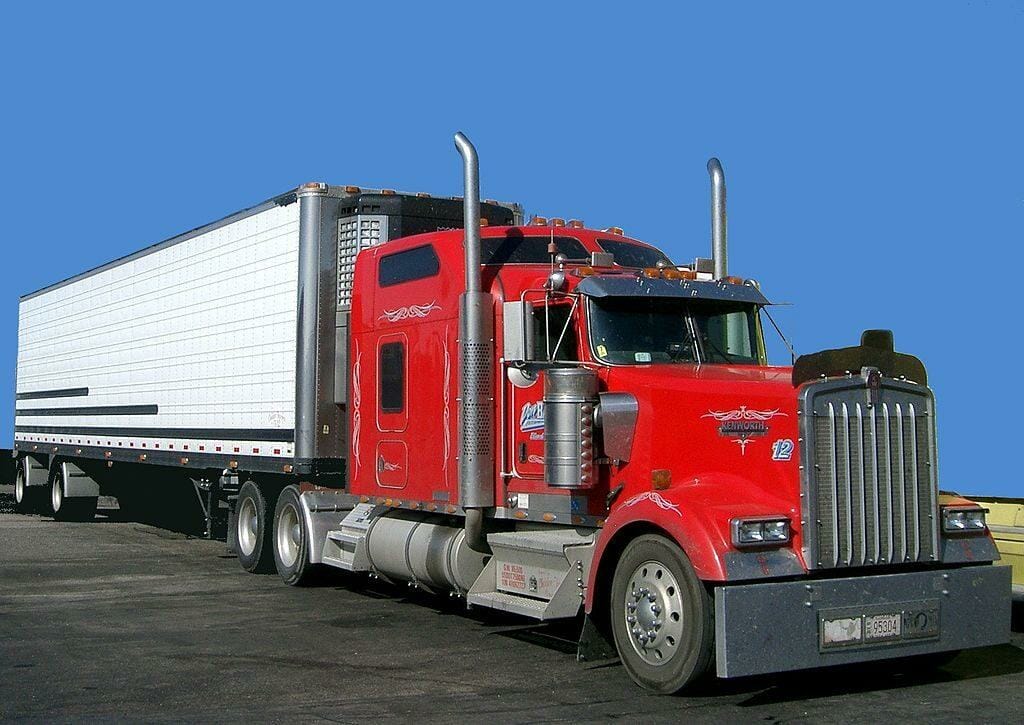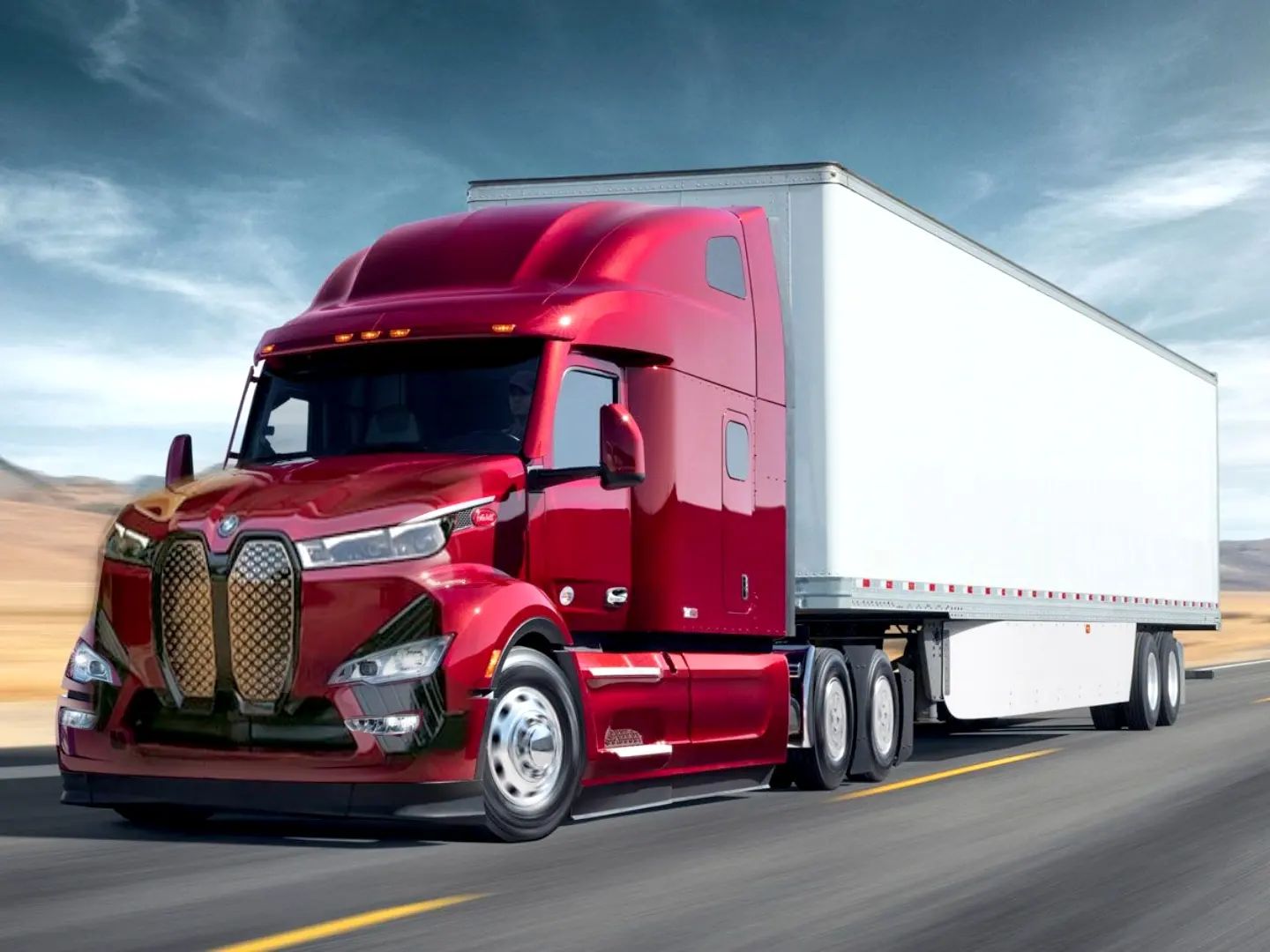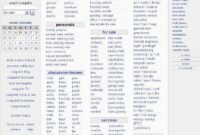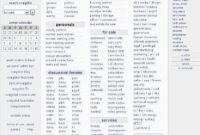Semi Trucks For Sale Under $50,000: A Comprehensive Guide for Budget-Conscious Buyers pickup.truckstrend.com
The open road calls to many, promising independence, adventure, and the potential for a thriving career in logistics. For aspiring owner-operators, small fleet expansions, or businesses needing dedicated hauling capacity, acquiring a semi truck is the first significant step. However, the sticker shock of a brand-new rig, often soaring well into six figures, can be a formidable barrier. This is where the market for semi trucks for sale under $50,000 becomes incredibly relevant, offering a gateway into the trucking industry for those operating on a tighter budget.
This comprehensive guide will navigate the landscape of affordable semi trucks, shedding light on what to expect, how to evaluate potential purchases, and the practicalities of owning a more seasoned vehicle. While a sub-$50,000 price tag often implies an older model with higher mileage, it doesn’t necessarily mean compromising on reliability if you approach the purchase with diligence and informed decision-making. For many, this price point represents a realistic entry point, allowing them to start earning revenue without the burden of crippling debt.
Semi Trucks For Sale Under $50,000: A Comprehensive Guide for Budget-Conscious Buyers
Why Consider a Semi Truck Under $50,000? Unlocking Opportunity
The decision to invest in a used semi truck, particularly one priced below $50,000, is often driven by compelling economic and strategic factors. This segment of the market caters to a specific demographic of buyers looking for maximum value and a lower barrier to entry.
Firstly, cost-effectiveness is paramount. A brand-new semi truck can easily cost upwards of $150,000 to $200,000 or more, requiring substantial financing and a significant down payment. By contrast, a truck under $50,000 drastically reduces the initial capital outlay, making it accessible to owner-operators just starting out or small businesses expanding their operations without draining their reserves. This lower entry cost frees up capital for other essential business expenses, such as insurance, fuel, and initial maintenance.
Secondly, for those seeking to test the waters of the trucking industry, a less expensive used truck offers a lower-risk proposition. It allows individuals to gain invaluable experience, build a client base, and understand the nuances of the business before committing to a much larger investment. Should the venture not pan out as expected, the financial exposure is considerably less.
Furthermore, an older truck can be an excellent foundation for an owner-operator who is mechanically inclined or willing to invest in strategic upgrades. Many seasoned truckers prefer the simplicity of older engines and mechanical systems, which can sometimes be easier and less expensive to repair than the complex, electronically controlled components of newer models. With proper maintenance and potentially some planned refurbishment, a well-chosen truck in this price range can deliver many more years of reliable service and a strong return on investment. It’s about finding the right balance between initial cost and long-term operational viability.
What to Expect When Buying Under $50,000: Realities and Limitations
While the allure of an affordable semi truck is strong, it’s crucial to approach this market segment with realistic expectations. A sub-$50,000 price tag typically indicates certain characteristics that buyers must be prepared for.
Age and Mileage: The vast majority of trucks in this price range will be older models, often ranging from 8 to 15+ years old, and will have accumulated significant mileage – frequently well over 600,000 to 1,000,000 miles. High mileage is a given, but a truck that has been well-maintained throughout its life can still be a strong performer.

Wear and Tear: Expect signs of wear and tear, both cosmetic and mechanical. This could include faded paint, minor body damage, worn interior components, and components that are nearing the end of their service life, such as tires, brakes, and suspension parts. While some cosmetic issues are easily fixable, deeper mechanical issues require careful evaluation.
Older Technology: These trucks will typically feature older engine technologies, often pre-dating the latest emission standards (e.g., pre-2010 or early post-2010 models that might have less refined DPF/SCR systems). They may lack advanced safety features common in newer trucks, such as collision mitigation systems, lane departure warnings, or adaptive cruise control. Fuel efficiency might also be lower compared to modern, aerodynamically optimized trucks.
Potential for Higher Maintenance: An older truck, by its nature, will likely require more frequent and potentially more costly maintenance than a newer one. Components wear out over time, and parts for older models might sometimes be harder to source or more expensive if they are specialized. Buyers should budget a significant contingency for immediate repairs and ongoing preventative maintenance.
Limited or No Warranty Coverage: Most trucks in this price bracket will be sold "as-is," with no remaining manufacturer warranty. Any extended warranties offered by third parties might be costly and come with significant limitations. This underscores the importance of a thorough pre-purchase inspection. Understanding these limitations upfront will help you make a more informed decision and avoid unexpected surprises down the road.
Key Factors to Evaluate Before Purchase: Your Due Diligence Checklist

Purchasing a semi truck under $50,000 is an investment that demands meticulous evaluation. Skipping essential checks can lead to costly regrets. Here’s a comprehensive checklist of factors to scrutinize:
- Engine & Drivetrain: This is the heart of your operation. Identify the engine manufacturer (Cummins, Detroit, PACCAR, Volvo, Mack, Cat, etc.), its horsepower, and torque ratings. Research common issues for that specific engine model and year. Check for oil leaks, unusual noises, and proper functioning of the transmission (manual or automatic). Ask about any recent major engine work (e.g., in-frame overhaul).
- Mileage & Hours: While high mileage is expected, combine it with engine hours. A truck with high mileage but relatively low engine hours might indicate more highway driving, which can be less strenuous on the engine than heavy idle time or stop-and-go city driving.
- Maintenance Records: This is arguably the most crucial piece of information. Comprehensive service records indicate consistent care and can reveal a history of repairs, recurring issues, and preventative maintenance schedules. A lack of records is a major red flag.
- Condition of Major Components:
- Tires: Inspect tread depth and even wear. New tires alone can cost thousands.
- Brakes: Check brake pads, drums/rotors, and air system for leaks.
- Suspension: Look for broken springs, worn bushings, and air bag leaks. Test the ride.
- Fifth Wheel: Ensure it’s in good working order, lubricated, and free of excessive play.
- Frame: Examine the entire frame for cracks, bends, or significant rust. This is a structural component and critical for safety.
- Body & Exterior: Inspect for accident damage, extensive rust, and overall structural integrity. While cosmetic flaws are common, major rust or collision damage could indicate deeper structural issues.
- Interior: Check the cab’s overall condition, including the seats, dashboard, gauges, and sleeper berth (if applicable). Ensure all electrical components (lights, HVAC, wipers, radio) are functional. Driver comfort is key for long hours on the road.
- Emissions Systems: For trucks built after 2007, they will have Diesel Particulate Filters (DPF) and possibly Selective Catalytic Reduction (SCR) systems requiring Diesel Exhaust Fluid (DEF). These systems can be expensive to repair or replace. Ensure they are functioning correctly and haven’t been tampered with. Be aware of the emission standards in your operating region.
- Type of Truck: Is it a day cab (no sleeper) or a sleeper truck? Tandem axle or single axle? This affects its suitability for different types of hauling (local vs. long-haul, heavy vs. lighter loads) and can influence price.
- Professional Pre-Purchase Inspection (PPI): This is non-negotiable. Hire an independent, certified heavy-duty mechanic to perform a thorough inspection. They will identify issues that a layperson might miss, providing an unbiased assessment of the truck’s true condition. The cost of a PPI is a small investment that can save you tens of thousands in unexpected repairs.
Where to Find Semi Trucks Under $50,000
Finding the right semi truck within your budget requires knowing where to look. The market for used commercial vehicles is vast, with several key channels:
- Online Marketplaces: Websites like TruckPaper.com, CommercialTruckTrader.com, and MyLittleSalesman.com are dedicated platforms for commercial vehicle listings. They offer extensive search filters, allowing you to narrow down options by price, make, model, year, and location. These are excellent starting points for browsing a wide selection.
- Auctions: Heavy equipment auction houses like Ritchie Bros. Auctioneers, IronPlanet, and GovPlanet frequently feature semi trucks. While auctions can offer significant savings, they come with higher risk as vehicles are typically sold "as-is" with limited opportunity for detailed inspection beforehand. Be prepared to do your homework and set a strict bidding limit.
- Used Truck Dealerships: Many large commercial truck dealerships have dedicated used truck departments. They often acquire trucks through trade-ins or fleet disposals. While prices might be slightly higher than private sales, dealerships sometimes offer limited warranties or reconditioned trucks, providing a bit more peace of mind.
- Private Sellers: Online classifieds (like Craigslist or local trucking forums) and word-of-mouth can lead you to private sellers. Prices can be lower as there’s no dealer markup, but the buyer assumes all responsibility for due diligence, as there’s typically no recourse after the sale.
- Fleet Disposals: Large trucking companies regularly update their fleets, selling off older, well-maintained units. Sometimes these are sold directly by the fleet, or through auctions and specialized brokers. These can be good sources for trucks with consistent maintenance histories.
Tips for a Successful Purchase
Navigating the used truck market can be daunting, but these tips will guide you towards a smart acquisition:
- Set a Realistic Budget (and Stick to It): Your $50,000 budget should include not just the truck’s purchase price, but also a contingency for immediate repairs, new tires (if needed), registration, licensing, insurance, and possibly a down payment if financing. Aim to spend less than your maximum budget on the truck itself to leave room for these initial costs.
- Do Your Research: Understand the pros and cons of different manufacturers, engine types, and models common in your price range. Read owner reviews and common problem reports.
- Always, Always Get a Professional Inspection: As mentioned, this is non-negotiable. A qualified mechanic can uncover hidden issues that could cost thousands.
- Negotiate: The listed price is often just a starting point. Be prepared to negotiate, especially if your inspection uncovers minor issues. Use market data from comparable sales to support your offer.
- Factor in Total Cost of Ownership (TCO): Beyond the purchase price, consider fuel efficiency, estimated maintenance costs, insurance premiums, and potential downtime. A slightly more expensive truck with better fuel economy or a more reliable engine might save you money in the long run.
- Consider Financing Options: While financing older, high-mileage trucks can be challenging, some specialized lenders cater to this market. Be prepared for higher interest rates and potentially larger down payments compared to financing a new truck. Have your financial documents in order.
Potential Challenges and Solutions
Even with careful planning, buying a used semi truck under $50,000 can present challenges. Being aware of them and having potential solutions in mind will help you mitigate risks.
- High Maintenance Costs: This is the most common challenge.
- Solution: Allocate a significant portion of your operational budget specifically for maintenance and unexpected repairs (e.g., $0.10-$0.20 per mile). Learn basic preventative maintenance yourself (e.g., checking fluids, greasing components). Build relationships with reliable, affordable heavy-duty mechanics. Consider a truck with a common engine for easier parts availability.
- Downtime: When your truck breaks down, you’re not earning money.
- Solution: Invest in thorough preventative maintenance to reduce breakdowns. Have a contingency plan for unexpected downtime, such as emergency savings or a relationship with a rental company for short-term needs if feasible for your operation. Prioritize critical repairs quickly.
- Financing Older Trucks: Traditional banks may be hesitant to finance high-mileage, older trucks.
- Solution: Seek out specialized commercial truck lenders or equipment financing companies. Be prepared for a higher down payment and potentially higher interest rates. Having a strong business plan and credit history will help. Owner financing might also be an option from private sellers, though less common.
- Emissions Compliance Issues: Older trucks, especially those from the 2007-2010 era, can have problematic DPF/SCR systems.
- Solution: Research the specific engine’s reputation for emissions system reliability. Ensure the truck passes all required state and federal emissions tests. Understand the costs of potential repairs or replacements for these systems, which can be substantial. Verify that the truck has not had its emissions systems tampered with, as this can lead to severe fines.
- Finding Quality Parts: For very old or obscure models, finding replacement parts can sometimes be difficult or expensive.
- Solution: Stick to common makes and models with widely available parts (e.g., Freightliner, Kenworth, Peterbilt, Volvo, International). Research parts availability before buying a less common model.
Semi Trucks For Sale Under $50,000: Example Price Table
Please note: The prices listed below are estimates and can vary wildly based on the truck’s exact condition, mileage, maintenance history, geographical location, market demand, and specific features. This table is intended to provide a general idea of what models and conditions you might find in the sub-$50,000 price range. Always conduct thorough research and a professional inspection.
| Make/Model (Example) | Year Range (Typical) | Engine (Common) | Mileage (Approx. Range) | Condition Notes (General) | Estimated Price Range (USD) |
|---|---|---|---|---|---|
| Freightliner Cascadia | 2008-2014 | Detroit DD13/DD15 | 600,000 – 900,000+ | Common fleet truck, high mileage, may show cosmetic wear, likely older emissions (DPF/DEF) | $25,000 – $48,000 |
| Kenworth T680/T800 | 2007-2013 | PACCAR MX-13, Cummins ISX | 700,000 – 1,000,000+ | Durable, often well-maintained fleet vehicles, potential for engine rebuilds or higher hours | $30,000 – $50,000 |
| Peterbilt 386/387 | 2006-2012 | CAT C15, Cummins ISX | 750,000 – 1,100,000+ | Classic styling, robust build, may require more attention to aging emissions systems | $28,000 – $47,000 |
| Volvo VNL Series | 2009-2015 | Volvo D13 | 650,000 – 950,000+ | Known for driver comfort and fuel efficiency for its age, potential for electrical sensor issues | $27,000 – $45,000 |
| International ProStar | 2010-2016 | MaxxForce 13, Cummins ISX | 500,000 – 800,000+ | Often good value for the year, common on the used market, ensure engine history (MaxxForce concerns) | $20,000 – $40,000 |
| Mack Vision/Pinnacle | 2007-2013 | Mack MP8 | 600,000 – 900,000+ | Robust, often used in vocational applications, may have higher engine hours relative to mileage | $25,000 – $48,000 |
(Disclaimer: Prices are approximate and subject to market fluctuations, individual truck condition, location, and specific features. Always verify details with the seller and conduct an independent inspection.)
Frequently Asked Questions (FAQ)
Q: Is it possible to find a reliable semi truck for under $50,000?
A: Yes, it is possible, but it requires thorough research, realistic expectations, and most importantly, a comprehensive pre-purchase inspection. "Reliable" in this context means a truck that, with proper ongoing maintenance, can consistently perform its duties without excessive downtime.
Q: What are the common issues with older semi trucks in this price range?
A: Common issues include worn-out components (tires, brakes, suspension), aging emissions systems (DPF, SCR) that can be costly to repair, oil leaks, electrical gremlins, and general wear and tear on the engine and drivetrain due to high mileage. Rust on the frame or cab is also common.
Q: Should I get a pre-purchase inspection (PPI)?
A: Absolutely, yes. A PPI by an independent, certified heavy-duty mechanic is the single most important step you can take. It can identify hidden problems that could cost thousands and help you negotiate a better price or avoid a bad purchase entirely.
Q: How much should I budget for maintenance on an older truck?
A: A good rule of thumb is to budget anywhere from $0.10 to $0.20 per mile for maintenance on an older truck, potentially more if you’re buying a very high-mileage or known problematic model. This should cover routine maintenance, unexpected repairs, and major component replacements over time.
Q: Can I get financing for a truck under $50,000?
A: It can be more challenging than financing a new truck, but it’s definitely possible. Traditional banks may be hesitant, but specialized commercial truck lenders and equipment finance companies often cater to this market. Be prepared for higher interest rates, shorter loan terms, and potentially a larger down payment (e.g., 20-30%).
Q: What’s the best mileage range to look for?
A: For under $50,000, you’ll primarily find trucks with 600,000 miles and up. There isn’t a "best" mileage, as maintenance history is far more important. A truck with 800,000 miles that has impeccable service records and recent major work (like an in-frame overhaul) might be a better buy than one with 500,000 miles with no history.
Q: What’s the difference between a day cab and a sleeper, and how does it affect price?
A: A day cab is designed for local or regional routes, without a sleeping compartment. A sleeper has an integrated living/sleeping area for long-haul operations. Day cabs are generally less expensive than comparable sleeper trucks because they are simpler, lighter, and often have lower initial costs and maintenance. Your operational needs will dictate which type is suitable.
Conclusion
The market for semi trucks for sale under $50,000 offers a viable and often necessary entry point for individuals and businesses looking to venture into or expand within the trucking industry without breaking the bank. While these trucks come with the inherent characteristics of age and mileage, they also represent a significant opportunity for cost savings and a quicker return on investment if chosen wisely.
Success in this segment hinges on meticulous research, realistic expectations, and, above all, a commitment to thorough inspection and ongoing preventative maintenance. By understanding the realities, diligently evaluating every potential purchase, and preparing for the challenges that come with an older vehicle, you can secure a reliable workhorse that serves your operational needs and paves the way for a profitable journey on the open road. The dream of owning a semi truck is more accessible than you might think, provided you approach it with an informed and strategic mindset.

_pic2.JPG/1200px-Peterbilt_359_Classic_(1977)_pic2.JPG)


